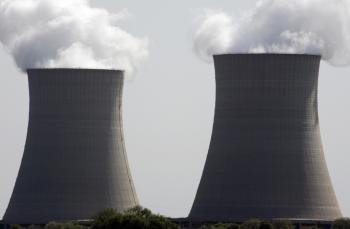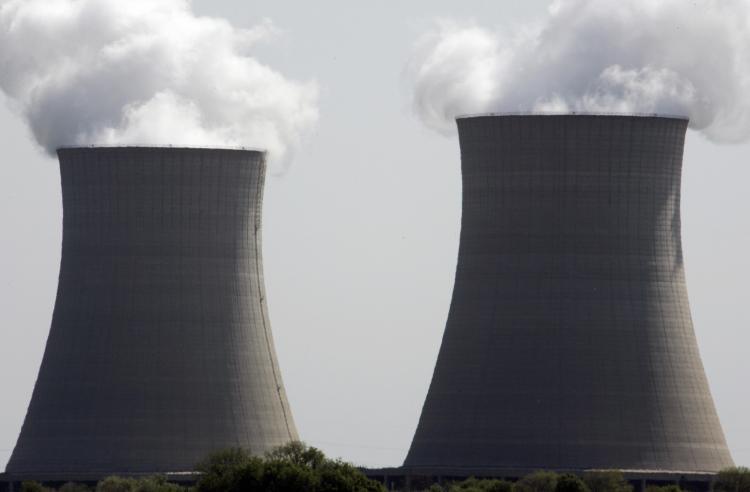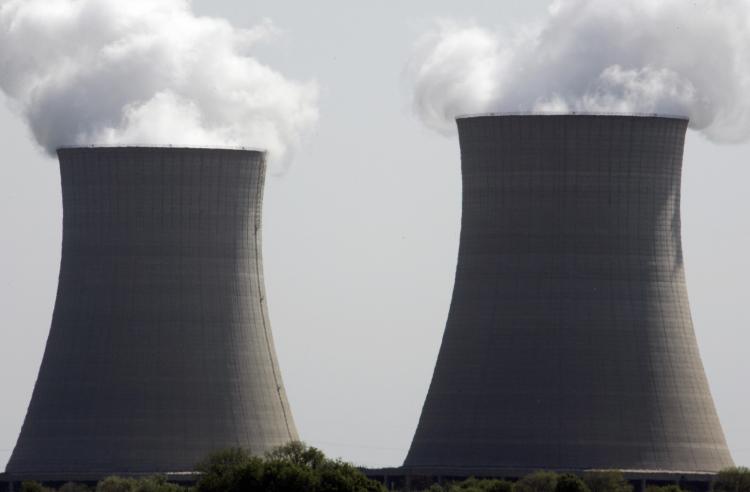Coal-fired power plants in 31 states may soon face a new set of regulations. The U.S. Environmental Protection Agency (EPA) has recently proposed a plan to cut pollution said to impair air quality and harm the health of people living downwind.
The proposal, announced on July 6, aims to reduce smog and soot emissions of coal-fired facilities, which contribute to poor air quality. Known as the Transport Rule, the regulations work with existing local and state pollution controls to help mostly Eastern states and the District of Columbia meet existing national air-quality standards.
“This rule is designed to cut pollution that spreads hundreds of miles and has enormous negative impacts on millions of Americans,” said EPA Administrator Lisa P. Jackson in a press release.
“We’re working to limit pollution at its source, rather than waiting for it to move across the country. The reductions we’re proposing will save billions in health costs, help increase American educational and economic productivity, and—most importantly—save lives,” she said.
Power-plant pollution causes tens of thousands of premature deaths each year, according to the American Lung Association. These emissions are linked to thousands of asthma cases and heart attacks and almost 2 million lost school or work days.
The Transport Rule promises to create health benefits for millions of Americans and is projected to prevent between 14,000 and 36,000 premature deaths annually, based on an EPA analysis.
The EPA says the new regulations would reduce power plant emissions of sulfur dioxide (SO2) and nitrogen oxides (NOx) to meet state-by-state emission reductions. By 2014, the rule and other state and EPA actions would reduce SO2 emissions by 71 percent over 2005 levels. NOx emissions would drop by 52 percent.
PLEASE SEE EPA ON PAGE A2
EPA CONTINUED FROM A1
The Transport Rule would replace the Clean Air Interstate Rule (CAIR), which was struck down by the U.S. Circuit Court of Appeals for the D.C. Circuit in 2008. While the court ordered the EPA to revise its proposal, it allowed CAIR to remain in place temporarily until the Transport Rule could be finalized.
The new proposal includes the same 28 states targeted in CAIR, as well as Kansas, Nebraska, and Oklahoma.
The EPA expects that the emission reductions can be accomplished by proven and readily available pollution-control technologies already in place at many power plants across the country.
Agency estimates suggest the plan could cost as much as $2.8 billion in 2014, but the agency argues that the resulting health care savings will far outweigh the cost of the new regulations.
Agency officials say the measure could produce $120 billion in annual health benefits in 2014, including avoiding an estimated 14,000 to 36,000 premature deaths, 23,000 nonfatal heart attacks, 21,000 cases of acute bronchitis, 240,000 cases of aggravated asthma, and 1.9 million days when people miss school or work due to symptoms caused by ozone and particle pollution.
“The harmful pollution coal-fired power plants emit into the air does not just endanger people in the immediate vicinity of the plant. Pollution from coal plants is carried downwind, endangering people throughout the entire eastern United States.
This rule addresses the reality that dangerous pollution doesn’t recognize state borders. Just as the oil gusher has now hit every Gulf state, the pollution from coal-fired power plants drifts downwind into people’s lungs throughout a region,” said Bruce Nilles, deputy conservation director of the Sierra Club in a statement supporting the measure.
The EPA claims the Transport Rule would also help to improve visibility in state and national parks and increase protection for ecosystems that are sensitive to pollution.
The proposal must still undergo a thorough review and comment period. The EPA will take public comment on the proposal for 60 days after the rule has been published in the Federal Register. The agency will soon announce dates and locations for public hearings.
The proposal, announced on July 6, aims to reduce smog and soot emissions of coal-fired facilities, which contribute to poor air quality. Known as the Transport Rule, the regulations work with existing local and state pollution controls to help mostly Eastern states and the District of Columbia meet existing national air-quality standards.
“This rule is designed to cut pollution that spreads hundreds of miles and has enormous negative impacts on millions of Americans,” said EPA Administrator Lisa P. Jackson in a press release.
“We’re working to limit pollution at its source, rather than waiting for it to move across the country. The reductions we’re proposing will save billions in health costs, help increase American educational and economic productivity, and—most importantly—save lives,” she said.
Power-plant pollution causes tens of thousands of premature deaths each year, according to the American Lung Association. These emissions are linked to thousands of asthma cases and heart attacks and almost 2 million lost school or work days.
The Transport Rule promises to create health benefits for millions of Americans and is projected to prevent between 14,000 and 36,000 premature deaths annually, based on an EPA analysis.
The EPA says the new regulations would reduce power plant emissions of sulfur dioxide (SO2) and nitrogen oxides (NOx) to meet state-by-state emission reductions. By 2014, the rule and other state and EPA actions would reduce SO2 emissions by 71 percent over 2005 levels. NOx emissions would drop by 52 percent.
PLEASE SEE EPA ON PAGE A2
EPA CONTINUED FROM A1
The Transport Rule would replace the Clean Air Interstate Rule (CAIR), which was struck down by the U.S. Circuit Court of Appeals for the D.C. Circuit in 2008. While the court ordered the EPA to revise its proposal, it allowed CAIR to remain in place temporarily until the Transport Rule could be finalized.
The new proposal includes the same 28 states targeted in CAIR, as well as Kansas, Nebraska, and Oklahoma.
The EPA expects that the emission reductions can be accomplished by proven and readily available pollution-control technologies already in place at many power plants across the country.
Agency estimates suggest the plan could cost as much as $2.8 billion in 2014, but the agency argues that the resulting health care savings will far outweigh the cost of the new regulations.
Agency officials say the measure could produce $120 billion in annual health benefits in 2014, including avoiding an estimated 14,000 to 36,000 premature deaths, 23,000 nonfatal heart attacks, 21,000 cases of acute bronchitis, 240,000 cases of aggravated asthma, and 1.9 million days when people miss school or work due to symptoms caused by ozone and particle pollution.
“The harmful pollution coal-fired power plants emit into the air does not just endanger people in the immediate vicinity of the plant. Pollution from coal plants is carried downwind, endangering people throughout the entire eastern United States.
This rule addresses the reality that dangerous pollution doesn’t recognize state borders. Just as the oil gusher has now hit every Gulf state, the pollution from coal-fired power plants drifts downwind into people’s lungs throughout a region,” said Bruce Nilles, deputy conservation director of the Sierra Club in a statement supporting the measure.
The EPA claims the Transport Rule would also help to improve visibility in state and national parks and increase protection for ecosystems that are sensitive to pollution.
The proposal must still undergo a thorough review and comment period. The EPA will take public comment on the proposal for 60 days after the rule has been published in the Federal Register. The agency will soon announce dates and locations for public hearings.







